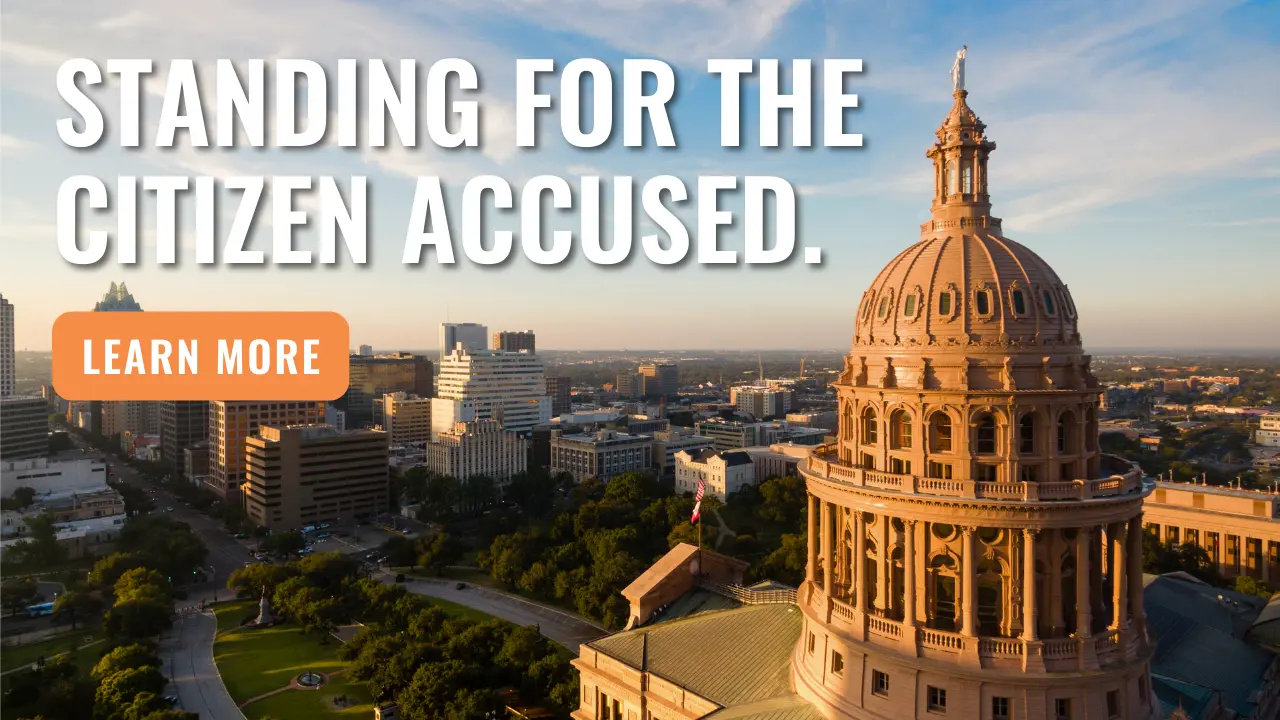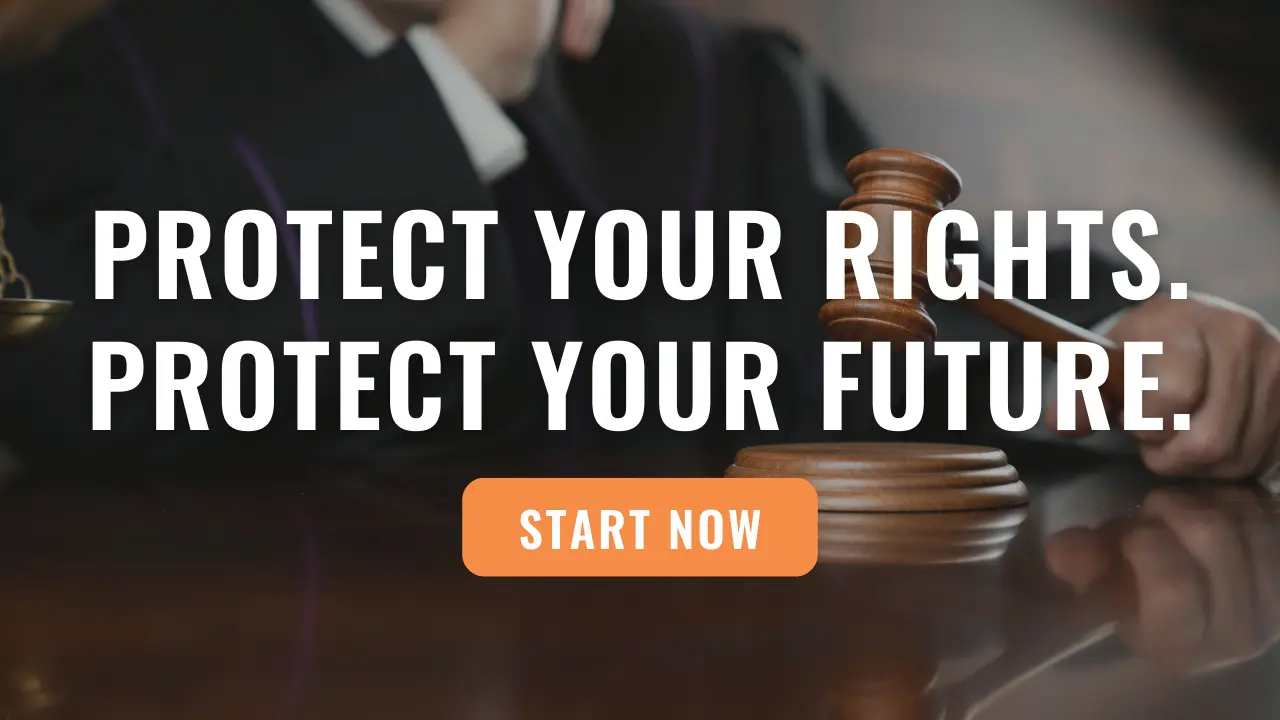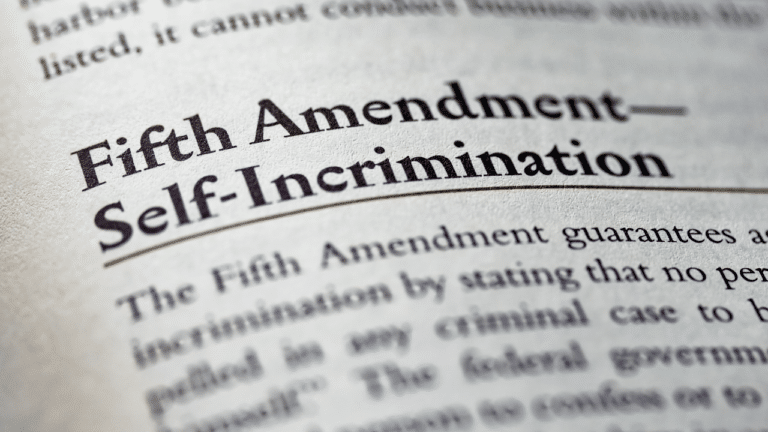
The Eighth Amendment to the Constitution of the United States prohibits excessive punishments. A punishment is excessive if it is not graduated and proportioned to the offense, as judged by currently prevailing standards of decency.
The Eighth Amendment simplified
The Eighth Amendment, also known as the cruel and unusual punishment amendment, limits the government’s power and authority to take punitive measures against both alleged and convicted offenders. The concept of proportionality is central to the Eighth Amendment. A claim that punishment is excessive is judged not by the standards that prevailed in 1791 when the Bill of Rights was adopted, but rather by those that currently prevail. Atkins v. Virginia, 536 U.S. 304 (2002). Amendment 8 draws its meaning from the evolving standards of decency that mark the progress of a maturing society.
WHAT IS THE TEXT OF THE EIGHTH AMENDMENT TO THE UNITED STATES CONSTITUTION?
U.S. Const. Amend. VIII. EXCESSIVE BAIL, FINES, PUNISHMENTS.
Excessive bail shall not be required, nor excessive fines imposed, nor cruel and unusual punishments inflicted.
WHAT IS THE HISTORICAL BACKGROUND OF THE EIGHTH AMENDMENT IN THE BILL OF RIGHTS?
The Eighth Amendment to the Constitution of the United States finds its roots in English common law. The English Bill of Rights, enacted in 1689 after the Glorious Revolution, declared “[t]hat excessive bail ought not to be required, nor excessive fines imposed, nor cruel and unusual punishments inflicted.”
Charles I, the English king from 1625 until his public beheading in 1649, made extensive use of the “Star Chamber.” Bessler, John D., A Century in the Making: The Glorious Revolution, the American Revolution, and the Origins of the U.S. Constitution’s Eighth Amendment 27 Wm. & Mary Bill Rts. J. 989 (2019). The Star Chamber was an English court at the Palace of Westminster that, without a jury, frequently imposed arbitrary fines, sentences of imprisonment, and used methods of torture. Charles I made the Star Chamber a means of great injustice and oppression. In the wake of this unchecked tyranny, English parliamentarians produced the Declaration of Rights, followed by the Bill of Rights.
American colonists were familiar with the infamous outrageous deeds occurring in the Star Chamber. By 1791, the Framers of the United States Constitution, including John Adams, Thomas Jefferson, and James Madison, recognized the importance of protecting individual liberties from government intrusion, especially the protection against excessive punishments. Their intention, made clear by the Preamble, was to “form a more perfect Union, establish Justice, insure domestic Tranquility, provide for the common defense, and promote the general Welfare.”
To assuage the Democratic-Republicans and Anti-Federalists, framer James Madison drafted the first ten constitutional amendments, known as the Bill of Rights, based on the desire to avoid another tyrannical government they had fought so hard against.
Abraham Holmes, of the South Carolina House of Representatives, argued that Congress might repeat the abuses of “that diabolical institution, the Inquisition,” and start imposing torture. Patrick Henry asserted that the lack of a prohibition of cruel and unusual punishments meant that Congress could use forms of punishment as tools of oppression. The Federalist party secured the ratification of the U.S. Constitution by promising the addition of amendments codifying fundamental liberties. And in the event of enunciating further particular affirmative rights, the Ninth Amendment enumeration language serves to protect other fundamental rights not set forth in the Constitution of the United States.
The Bill of Rights guarantees fundamental freedoms often restrained by despotic, oppressive governments. It encompasses “the great rights” such as the sixth amendment and seventh amendment rights to civil trial and criminal trial by jury, the first amendment freedom of speech and freedom of the press, the 2nd amendment right to keep and bear arms, and the 4th amendment right to be free from unreasonable government searches and seizures. They are considered the “choicest privileges of the people” in the United States, and are protected from government overreach.
The first ten amendments were proposed to several state legislatures by the First Congress on September 25, 1789. New Jersey was the first State to ratify the Bill of Rights on November 20, 1789, followed by Maryland, North Carolina, South Carolina, New Hampshire, Delaware, Pennsylvania, New York, and Rhode Island in 1790. Vermont and Virginia ratified the Bill of Rights in 1791, resulting in its adoption. The Legislatures of Connecticut, Georgia, and Massachusetts held out on ratification until 1939.
WHAT IS THE EIGHTH AMENDMENT CRUEL AND UNUSUAL PUNISHMENTS CLAUSE?
The Eighth Amendment protection against cruel and unusual punishments prohibits inherently barbaric punishments, and excessive punishments that are disproportionate to the crime. In other words, even if a punishment or term of imprisonment is not, in the abstract, cruel and unusual, it may be for a particular offense. “Even one day in prison would be a cruel and unusual punishment for the ‘crime’ of having a common cold.” Robinson v. California, 370 U.S. 660, 667 (1962).
What are examples of cruel and unusual punishment?
The Cruel and Unusual Punishments Clause prohibits the imposition of inherently barbaric punishments under all circumstances. Punishments of mistreatment such as torture, for example, are forbidden. The government must respect the human attributes, even of those who have committed serious crimes.
When assessing proportionality of the length of imprisonment for a particular crime, courts begin by comparing the gravity of the offense with the severity of the sentence. If the comparison leads to an inference of gross disproportionality, courts then compare the defendant’s sentence with the sentences received by other offenders in the same jurisdiction and with the sentences imposed for the same crime in other jurisdictions. If the analysis validates an initial judgment that the sentence is grossly disproportionate, the sentence is cruel and unusual.
Below are examples of disproportionate “term-of-years sentences” compared to the circumstances of each case:
- In Weems v. United States, the U.S. Supreme Court held the punishment of 12 years jailed in irons at hard and painful labor for the crime of falsifying records was excessive.
- In Solem v. Helm, the defendant was convicted of passing a worthless check, and sentenced to life without parole because it was his seventh (nonviolent) felony. The U.S. Supreme Court held it was a disproportionate sentence, and thus violated the Eighth Amendment.
- In Graham v. Florida, the defendant was 17 years old when he was sentenced to life without the possibility of parole (unless granted executive clemency) for burglary. The U.S. Supreme Court held the sentencing practice of life without parole for nonhomicide crimes committed by juvenile offenders—meaning anyone under 18 at the time of the offense—violates the Eighth Amendment prohibition of excessive punishments.
By contrast, the Supreme Court has upheld similar punishments in other cases with comparable fact scenarios:
- In Ewing v. California, under California’s three-strikes recidivist sentencing scheme, the defendant was sentenced to 25 years to life for stealing golf clubs worth a total of $1,197. The defendant had been convicted of several thefts, three felony burglaries, and one felony robbery, and was on parole at the time he stole the golf clubs. The U.S. Supreme Court weighed the circumstances of the offense, the sentencing scheme designed to increase the prison terms of repeat felons, and the defendant’s criminal history, and determined the sentence was not cruel and unusual under the Eighth Amendment.
- In Harmelin v. Michigan, the defendant was sentenced to life without parole for possessing more than 650 grams of cocaine, which was upheld by the U.S. Supreme Court as constitutional, and not disproportionately cruel and unusual.
- In Hutto v. Davis, the defendant was sentenced to 40 years for possessing less than nine ounces of marijuana with intent to distribute. A sharply divided U.S. Supreme Court upheld the sentence as constitutional, despite the state legislature’s post-conviction reduction of the maximum prison term for the same offense to 10 years.
- In Rummel v. Estelle, the defendant was sentenced to life imprisonment as an habitual felony offender for his third felony conviction: obtaining $120.75 by false pretenses. He had previously been convicted of passing a forged check for $28.36, and of fraudulently using a credit card to obtain $80 worth of goods or services. The U.S. Supreme Court held the sentence was not cruel and unusual under the Eighth Amendment.
The Supreme Court explained in Rummel that Eighth Amendment judgments should neither be nor appear to be merely the subjective views of individual Justices. The excessiveness of one prison term as compared to another is invariably a subjective determination, there being no clear way to make any constitutional distinction between one term of years and a shorter or longer term of years. For crimes classified and classifiable as felonies, the length of the sentence actually imposed is purely a matter of legislative prerogative.
Can prison conditions be cruel and unusual punishment?
Yes. While the Constitution does not guarantee comfortable prisons, especially in those housing persons convicted of serious crimes, conditions of confinement may amount to cruel and unusual punishment if justly described as deplorable and sordid. Disenfranchisement of basic human health and safety may rise to cruel and unusual.
In determining whether particular prison conditions are cruel and unusual, courts closely adhere for all intents to the broad standards which guide cruel and unusual cases generally. If a complained-of prison condition was so inherently severe as to transcend elemental concepts of decency, or shock the general conscience and be intolerable in fundamental fairness, it violates the Eighth Amendment prohibition.
For example, in Hope v. Pelzer, prison guards in an Alabama prison handcuffed a prisoner (Hope) to a hitching post for disruptive conduct. He was handcuffed above shoulder height, and when he tried to move his arms to improve circulation, the handcuffs cut into his wrists. The second time this occurred, he was cuffed to the post for seven hours in the sun without a shirt, and offered one water break, and no bathroom breaks. Hope brought a claim under Section 1983 alleging cruel and unusual punishment. The U.S. Supreme Court held the guards were not entitled to qualified immunity, and this practice was illegal, cruel, and unusual.
What is a 1983 claim?
A claim under Section 1983 of Title 42 of the United States Code is a civil action brought by an individual against a person acting under color of state law or government organization for abuse of power. The purpose of § 1983 is to deter state actors from using their badges of authority to deprive citizens of their federally guaranteed rights, and to provide relief to victims if such deterrence fails.
In Nance v. Ward, a prisoner (Nance) who was sentenced to death in Georgia brought suit under § 1983 to enjoin, or prevent, Georgia from using lethal injection to carry out his execution, arguing the method of execution as applied to him was cruel and unusual. Instead, he suggested a firing squad, which was not an approved method of execution in Georgia. The U.S. Supreme Court held Nance’s § 1983 challenge was an appropriate legal vehicle of challenging his execution, and reversed the lower appellate court’s dismissal of Nance’s claim. Nance properly used § 1983 here.
Climate change has also brought forth Section 1983 claims regarding prison conditions, given that many prisons, including those in Texas, do not have air conditioning. Although the lack of air conditioning or other forms of temperature control in prisons may be widely agreed upon as cruel and unusual, the U.S. Supreme Court has yet to address it.
WHAT IS THE DEATH PENALTY AND DOES IT VIOLATE THE EIGHTH AMENDMENT?
The death penalty, also known as capital punishment, differs from all other forms of conventionally accepted punishment. The social purposes served by the death penalty are retribution and deterrence of capital crimes by prospective offenders. Imposing the death penalty must measurably contribute to one or both of those goals in order to be justified under the Eighth Amendment. In other words, capital punishment can serve as a deterrent only when murder is the result of premeditation and deliberation—the culpability of the average murderer is insufficient to justify the most extreme sanction available.
In Godfrey v. Georgia, the defendant shot and killed his wife and mother-in-law, called police, and confessed. At trial, he claimed temporary insanity in his defense, but the jury found him guilty and sentenced him to death. Georgia’s capital murder statute permitted the death penalty if the crime was “outrageously or wantonly vile, horrible or inhuman in that it involved torture, depravity of mind, or an aggravated battery to the victim.” The U.S. Supreme Court determined that this language was so broad that it allowed imposing the death penalty in an arbitrary and capricious manner, which occurred in this case. The death penalty under these circumstances violated the Eighth Amendment.
What is the history of the death penalty?
The death penalty is one of the oldest forms of criminal punishment, dating back to the eighteenth century B.C.E. in Babylonia. John D. Bessler, The Abolitionist Movement Comes of Age: From Capital Punishment as a Lawful Sanction to Peremptory, International Law Norm Barring Executions, 79 Mont. L. Rev. 7 (2018). Death sentences and executions were almost universally embraced throughout the world for centuries, and mandatory for certain felonies.
Today, only a minority of nations still actively use executions. The anti-death penalty, or “Abolitionist” movement, is rooted in the Enlightenment with Cesare Beccaria’s treatise, Dei delitti e delle pene (1764). Id. And the same U.S. Constitution that permits States to authorize capital punishment also allows them to outlaw it, without the judiciary attempting to end the debate reserved for the people and their representatives.
Is the death penalty constitutional?
The Constitution of the United States allows capital punishment. Bucklew v. Precythe, 139 S.Ct. 1112 (2019). In fact, death was the standard penalty for all serious crimes at the time of the founding of America. The Fifth Amendment expressly contemplates that a defendant may be tried for a “capital” crime and “deprived of life” as a penalty, so long as proper procedures are followed. Even the First Congress made a number of crimes punishable by death.
In Furman v. Georgia, the U.S. Supreme Court declared Georgia’s capital punishment statute unconstitutional as being applied in an arbitrary and discriminatory manner. However, in Gregg v. Georgia, declared the amended Georgia statute allowing the death penalty constitutional.
In what states is the death penalty legal?
As of 2023, the death penalty is still legal in 27 states:
- Alabama
- Arkansas
- Arizona
- California*
- Florida
- Georgia
- Idaho
- Indiana
- Kansas
- Kentucky
- Louisiana
- Mississippi
- Missouri
- Montana
- Nebraska
- Nevada
- North Carolina
- Ohio
- Oklahoma
- Oregon*
- Pennsylvania*
- South Carolina
- South Dakota
- Tennessee
- Texas
- Utah
- Wyoming
*Although the death penalty remains a statutorily available punitive measure in California, Oregon, and Pennsylvania, there are gubernatorial holds on executions. The governors in each of those states have imposed a moratorium, or temporary suspension, on the death penalty in an effort to dismantle death row.
When is the death penalty cruel and unusual?
The penalty of death may not be imposed under sentencing procedures that create a substantial risk that the punishment will be inflicted in an arbitrary and capricious manner. Furman v. Georgia, 408 U.S. 238 (1972). There are circumstances in which the death penalty has been determined cruel and unusual, depending on the nature of the offense, or the characteristics of the offender. For example, the death penalty is prohibited for defendants who commit crimes before the age of 18, or who are mentally retarded. Graham v. Florida, 560 U.S. 48 (2010).
- In Atkins v. Virginia, the defendant was convicted of abduction, armed robbery, and capital murder. At his trial, a forensic psychologist testified for the defense. The psychologist evaluated the defendant, and concluded he was mildly mentally retarded. Although the defendant’s full scale IQ was 59, he was sentenced to death. The U.S. Supreme Court held that the defendant, because of his impairments, had diminished capacity to understand and process information, to communicate, to abstract from mistakes and learn from experience, to engage in logical reasoning, to control impulses, and to understand the reactions of others. The death penalty is cruel and unusual here.
- In Roper v. Simmons, the defendant committed murder at age 17, and was convicted and sentenced to death after turning 18. The U.S. Supreme Court held execution of individuals who were under 18 years old at the time of the crime is prohibited by the Eighth Amendment and Fourteenth Amendment.
What are methods of execution for the death penalty?
The method of execution has been a topic of debate for centuries, especially in the realm of Eighth Amendment jurisprudence. Hanging was the standard method of execution through much of the 19th century. Glossip v. Gross, 576 U.S. 863 (2015). In the late 1800s, the States transitioned to electrocution, believing that it was less painful and more humane than hanging. Missouri, for example, replaced hanging with a gas chamber in the early 20th century.
By 1915, electrocution was the predominant method of execution, and remained so for nearly a century—with firing squads and lethal gas as alternatives. The lethal injection was first proposed as a method of execution in the 1970s, and quickly became the standard method, accepted as the most humane. Deborah W. Denno, The Lethal Injection Quandary: How Medicine Has Dismantled the Death Penalty, 76 Fordham L. Rev. 49 (2007). Hanging has been outlawed as barbaric by contemporary standards.
In the 27 States with the death penalty, lethal injection is by far the most common method of execution, with electrocution, firing squad, gas chamber, and nitrogen hypoxia as alternatives in some states. Specifically, fifteen States authorize only use of the lethal injection, while nine States use lethal injection in addition to one or more specified methods. In addition to lethal injection, Mississippi, Oklahoma, South Carolina, and Utah authorize the firing squad. Arkansas, California, Kentucky, Missouri, and Wyoming authorize death by electrocution or lethal gas. Alabama has introduced death by nitrogen hypoxia as an additional alternative, along with Oklahoma and Mississippi.
What is nitrogen hypoxia and how does it work?
Nitrogen hypoxia is the newest proposed method of execution. Its use was first proposed in 1994 as the most humane method of carrying out executions, assuring a quick and painless death. In 2018, Alabama enacted legislation permitting the use of nitrogen hypoxia as a method of execution, upon the prisoner’s election. Ala. Code 1975 § 15-18-82.1.
Hypoxia is the condition of reducing the normal amount of oxygen in the body’s tissue, and can occur if there is an obstruction of the upper respiratory tract, if exposed to extremely high altitudes, or if inert gasses are inhaled. See Kevin M. Morrow, Execution by Nitrogen Hypoxia: Search for Scientific Consensus, 59 Jurimetrics J. 457–85 (2019). When pure nitrogen is breathed, the blood becomes less saturated with oxygen because the respired gas removes the oxygen in the pulmonary arterial blood. After a few breaths, the lungs fill with pure nitrogen, and death is caused by the displacement of oxygen from the breathed gas mix. Although the heart continues to beat for a short time after breathing stops, autopsy reports of inert gas hypoxia show only general signs of suffocation.
In Bucklew v. Precythe (2019), the death-row inmate (Bucklew) challenged Missouri’s lethal injection procedures, and proposed nitrogen hypoxia as an alternative. But the U.S. Supreme Court reiterated the Constitution allows capital punishment—it does not guarantee a prisoner a painless death, whether or not they request access to an alternative method. In this case, Bucklew failed to present sufficient evidence that the lethal injection would cause him substantial, avoidable, severe pain that amounts to barbarism and torture.
What is the lethal injection?
The lethal injection is the most commonly used method of execution in the United States. The majority of states carry out the lethal injection using a three-drug cocktail: (1) sodium thiopental, a fast-acting barbiturate sedative that induces a deep, coma-like unconsciousness when given in the amounts used for lethal injection; (2) pancuronium bromide (“Pavulon”), a paralytic agent to stop respiration; and (3) potassium chloride, which interferes with the electrical signals that stimulate the contractions of the heart, inducing cardiac arrest. See Bucklew v. Precythe, 139 S.Ct. 1112 (2019).
The lethal injection posed ethical quandaries among medical societies, who opposed doctors joining executioners because doing so violated the Hippocratic Oath. Additional criticisms of the lethal injection indicate the potential for suffering as a result—if the first drug, sodium thiopental, was ineffective, the inmate would remain conscious for the second and third drugs. And the second drug, because of its paralytic effects, would mask any indication of consciousness and excruciating pain from feelings of burning and suffering. Instead of using doctors, States employ phlebotomists and emergency medical technicians to administer the drugs. Inmates continue to challenge the lethal injection.
In Baze v. Reez, the death-row inmate (Baze) challenged Kentucky’s three-drug protocol for the lethal injection. The U.S. Supreme Court held that a State’s refusal to alter its lethal injection protocol could violate the Eighth Amendment if an inmate first identified a feasible, readily implemented alternative procedure that would significantly reduce the substantial risk of severe pain. The lethal injection in Kentucky passed muster because Baze raised no evidence that the protocol was intended to add “elements of terror, pain, or disgrace to the death penalty.”
What crimes get the death penalty?
Capital punishment is impermissible for nonhomicide crimes against individuals. Kennedy v. Louisiana, 554 U.S. 407 (2008). And even then, the “average murderer” lacks the culpability to justify the most extreme sanction available to the government. It is only when murder is the result of premeditation and deliberation that the goals of deterrence and retribution are served.
Can someone get the death penalty for rape?
No, unless the criminal offender who commits the rape also intentionally kills the victim. The death penalty is prohibited for nonhomicide crimes against individuals.
WHAT IS EXCESSIVE BAIL IN THE EIGHTH AMENDMENT?
The Eighth Amendment’s Excessive Bail Clause prevents the imposition of bail conditions that are excessive in light of the valid interests the state seeks to protect by offering bail. This traditional right to freedom before presentment of an indictment to grand jury, or prior to trial, permits the unhampered preparation of a defense, and serves to prevent the infliction of punishment prior to conviction. The right to release before trial is conditioned on the accused’s giving adequate assurance that he or she will stand trial and submit to sentence if found guilty.
The Excessive Bail provision is integral to the concept of ordered liberty. Various state constitutions contain their own provisions against excessive bail, while federal law unequivocally provides that a person arrested for a noncapital offense shall be admitted to bail.
What is bail?
Bail is the adequate pre-trial assurance of the accused that he will, upon release, return to stand trial and submit to sentencing if found guilty. A person arrested for a crime has a right to freedom before conviction. But, like the ancient practice of securing the oaths of responsible persons to stand as sureties for the accused, the modern practice of requiring a bail bond or the deposit of a sum of money subject to forfeiture serves as an additional assurance of the presence of the accused. Stack v. Boyle, 342 U.S. 1 (1951). Every person accused of a crime is entitled to a hearing at which evidence relevant to his individual case is considered to determine the amount of bail necessary.
Ultimately, bail is an attempt to solve a dilemma. Its purpose is to provide the accused freedom from incarceration before guilt has been proved, and yet insure his presence for trial and possible sentence. Additionally, bail relieves the accused of imprisonment, and relieves the state of the burden of keeping him, pending trial.
When is bail excessive?
Bail set at a higher than an amount reasonably calculated to fulfill the purpose of assuring the accused’s presence in court is “excessive” under the Eighth Amendment. Fixing the amount of bail is generally within the sound discretion of the trial court, whose determination will be reviewed by appellate courts for abuse of discretion. Ordinarily, appellate courts will not interfere if the amount set by the trial court is reasonable, and not excessive.
When an accused believes his bail is excessive, he may request access to a reduction by filing a motion to reduce bail in the trial court, in addition to an application for writ of habeas corpus challenging the constitutionality of the amount of bail. The burden of showing that bail is excessive and that the defendant is entitled to a reduction is on the defendant.
How does bail work in the United States?
Because state legislatures may set limits and restrictions on bail, federal courts and Congress have left them to do so without much interference. For its own part, Congress formulated the Bail Reform Act of 1984 in response to an alarming problem of crimes committed by persons on release. The Act represented the National Legislature’s considered response to numerous perceived deficiencies in the federal bail process by providing courts with adequate authority to make release decisions that give appropriate recognition to the danger a person may pose to others if released.
The Bail Reform Act requires a judicial officer to determine whether an arrestee shall be detained. If, after a hearing, the judge or judicial officer finds that no condition or combination of conditions will reasonably assure the appearance of the person and the safety of the community, the person shall be detained prior to trial. 18 U.S.C. § 3141–42.
In United States v. Salerno, defendants Anthony Salerno and Vincent Cafaro were charged with 29 counts of RICO violations, mail and wire fraud offenses, extortion, and various gambling offenses. The prosecution moved to detain Salerno and Cafaro without release, arguing no condition would assure the safety of the community or any person. The Government showed Salerno was the “boss” of the Genovese crime family of La Cosa Nostra, and Cafaro was a “captain.” The District Court granted the motion and held the defendants without bail, and the U.S. Supreme Court upheld the ruling. While release is the norm, the compelling interest of public safety justifies detention.
WHAT ARE EXCESSIVE FINES IN THE EIGHTH AMENDMENT?
The Eighth Amendment’s Excessive Fines Clause limits the government’s power to extract payments, whether in case or in kind, as punishment for some offense, and protects against abuses of the government’s punitive or criminal-law-enforcement authority. Such protection is fundamental to the United States’ scheme of ordered liberty, and deeply rooted in history and tradition. The Excessive Fines Clause thus applies to the States through the Fourteenth Amendment Due Process Clause.
The protection against excessive fines has been a constant shield throughout Anglo-American history: Exorbitant tolls undermine other constitutional liberties. Excessive fines can be used, for example, to retaliate or chill the speech of political enemies. See, e.g., Browning v. Ferris, Inc. v. Kelco Disposal, Inc., 492 U.S. 257 (1989). Even absent a political motive, fines may be employed in a measure out of accord with the penal goals of retribution and deterrence—fines are a source of revenue, while other forms of punishment cost a State money.
It thus makes sense to scrutinize governmental action more closely when the State stands to benefit. Perhaps because they are politically easier to impose than generally applicable taxes, state and local governments nationwide increasingly depend heavily on fines and fees as a source of general revenue.
When is asset forfeiture an excessive fine?
Asset forfeiture proceedings, or civil in rem forfeiture actions brought by the government seeking to take property allegedly used in the commission of a crime, may violate the Eighth Amendment prohibition against excessive punishment. Courts reviewing whether a forfeiture action is an excessively punitive economic sanction apply the proportionality test to determine whether the punishment is disproportionate to the offender and the offense.
For example, in Timbs v. Indiana, the defendant was convicted of drug dealing and placed on community supervision with fines and costs amounting to $1,203. When he was arrested, police seized his vehicle—a Land Rover SUV he paid $42,000 for with his deceased father’s life insurance payout. The State brought civil suit for forfeiture of the Land Rover, alleging it was used to transport heroin. The U.S. Supreme Court declared the Excessive Fines Clause applied to the States, and it was ultimately determined that civil forfeiture of the SUV would be grossly disproportionate to the gravity of the offense. Allowing the State to take the car would violate the Eighth Amendment.
EIGHTH AMENDMENT TO THE UNITED STATES CONSTITUTION
The very core of the Eighth Amendment is the prohibition of excessive punishment, whether in the form of fines, imprisonment, or other cruel and unusual practices. Certain punishments tolerated at the time of the framing have largely fallen into disuse, such as barbaric and disgusting practices as dragging a prisoner to the place of execution, disemboweling, quartering, public dissection, and burning alive.
“Cruel” is a term often used to mean “pleased with hurting others, inhuman, hard-hearted, void of pity, wanting compassion, savage, barbarous, unrelenting, or disposed to give pain to other in body or mind. “Usual” means “fallen completely out of usage for a long period of time.” Contemporary evidence confirms that the people who ratified the Eighth Amendment would have understood it to prohibit tortures and barbarous punishments, as well as excessive fines and pre-trial confinement.
Taken together, the Eight Amendment’s prohibitions on excessive bail, excessive fines, and cruel and unusual punishments place parallel limitations on the power of those entrusted with the criminal-law function of the government.
EIGHTH AMENDMENT COURT CASES
The United States Supreme Court has interpreted and applied the Eighth Amendment since its adoption in 1791.
In United States v. Tsarnaev, the defendant was convicted of crimes arising from the Boston Marathon bombings, and the death penalty was imposed on six of 17 capital counts. At trial, the defendant attempted to introduce mitigating evidence that his brother masterminded the bombings, so he was not sufficiently culpable to warrant the death penalty. The defendant sought to show his brother committed a crime years earlier, but the Federal Death Penalty Act is not an evidentiary free-for-all. The district court correctly excluded evidence without probative value without violating the Eighth Amendment prohibition against administering the death penalty without mitigation.
























